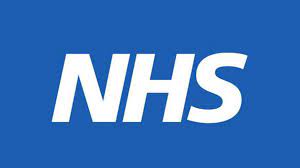Non-hormonal medications
- 23 Jan 2024
- 2 Minutes to read
- Print
- PDF
Non-hormonal medications
- Updated on 23 Jan 2024
- 2 Minutes to read
- Print
- PDF
Article summary
Did you find this summary helpful?
Thank you for your feedback
The British Menopause Society (BMS) has produced a table with detailed information on non-hormonal prescribable alternatives to HRT. See factsheet. The following is a summary of some options. Most are off-license and have been evaluated for their impact on vasomotor symptoms. None are as effective as HRT.
| Drug | Dose | Side effects | Notes |
| Clonidine |
| Side effects are dose related and can include dry mouth, nausea, fatigue, sleep disturbance. |
|
| Selective serotonin reuptake inhibitors (SSRIs). |
| Initial worsening anxiety, appetite increased, arthralgia, constipation, diarrhoea, dizziness, dry mouth, myalgia, nausea, sleep disorder, sexual dysfunction. |
|
| Selective serotonin and noradrenaline reuptake inhibitors (SNRIs). |
| There are often problems early on with dizziness and loss of sexual function. |
|
| Gabapentin (gamma amino butyric acid agonist) |
| Anxiety, altered appetite, weight gain, arthralgia, asthenia, confusion, constipation, cough, diarrhoea, dizziness, dry mouth, drowsiness. There is a very specific dose related component. |
|
| Pregabalin (gamma amino butyric acid agonist). |
| Altered appetite, asthenia, concentration changes, confusion, constipation, dizziness, drowsiness, dry mouth, headache. |
|
| Oxybutynin (an antimuscarinic agent) |
| Constipation, dizziness, drowsiness, dry mouth, dyspepsia, headache, flushing, urinary retention, agitation, blurred vision. |
|
Note:
- For more information on non-hormonal alternatives to HRT, see management section.
- Oxybutynin is an off-license option, however the dose of a transdermal patch for vasomotor symptoms is not established.
- St John's Wort is available over the counter. NICE says there is some evidence that it may help relieve vasomotor symptoms. However there is some uncertainty about the appropriate dose and nature of preparations and it can also interact with other medications including Tamoxifen. For more information see management section.
- Fezolinetant is a neurokinin 3 antagonist that was licensed for vasomotor symptoms on 14.12.2023. It is not yet available on the NHS but it is expected to be available on private prescription from mid January 2024. The recommended dose is one 45mg tablet taken daily. For more information click here.
References and Further Information:
- National Institute for Health and Care Excellence. Guideline. Menopause (update). Draft for consultation, Nov 2023. Page 12 of 99 Section 1.4.7.
- BMS Update. Fezolinetant licensed by the MHRA. December 2023.
Was this article helpful?

